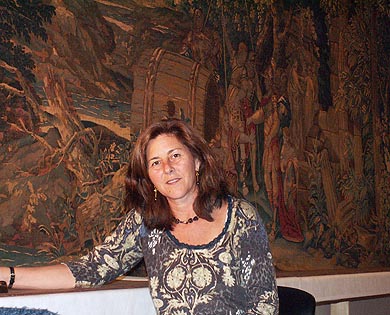From the New York Times, Dec. 2, 2010:

Victorian theatergoers packed halls to watch canvases roll past. Entrepreneurs would ship paintings of exotic scenery hundreds of feet long to theaters nationwide, and stagehands, as if anticipating animated movies, would slowly reveal section after section of the “moving panoramas.” Pianists supplied uplifting music, and actors’ voice-overs explained the plot.
One of the more successful productions, “Moving Panorama of Pilgrim’s Progress,” started making the rounds in 1851. Artists as prominent as Frederic Edwin Church and Jasper Cropsey had designed the images, based on John Bunyan’s 1678 didactic Christian allegory about a family confronting angels and demons at the edges of abysses and castle walls.
Reviews of the panorama were ecstatic. In Charleston, S.C., “the pleasure of witnessing it was enlarged by the presence of about 130 of the Orphan House children, with their shining, happy faces,” a local newspaper reported.
By the 1860s, however, Bunyan’s somewhat ponderous tale of journeys through the “slough of despond” and “valley of humiliation” had gone out of fashion, and a theater owner in Maine let crates of the rolled-up muslin molder in storage. The Dyer Library and Saco Museum in Saco, Me., inherited them in 1896 and rediscovered them a century later. For the last year, restorers at the Williamstown Art Conservation Center in Massachusetts have been working on about 800 feet of fabric stretched out in the hallway and driveway.
“Benign neglect allowed it to survive,” said Thomas Branchick, the center’s director.
The restorers sometimes wore socks to avoid leaving footprints while removing dust, creases and signs of water damage known in the trade as tide lines. Lower portions of the paintings have been left slightly scraped, as evidence of countless unrollings.
“The bottom edge would have dragged on the stage floor,” Mr. Branchick said.
Saco financed the restoration partly with a $51,940 Save America’s Treasures federal grant. The muslin will be shipped home in a few weeks. Digital photographs, taken from a camera on the ceiling, will be spliced together to create a panoramic reproduction that the museum will use in live performances.
Read more here.
 A detail of the painting
A detail of the painting





